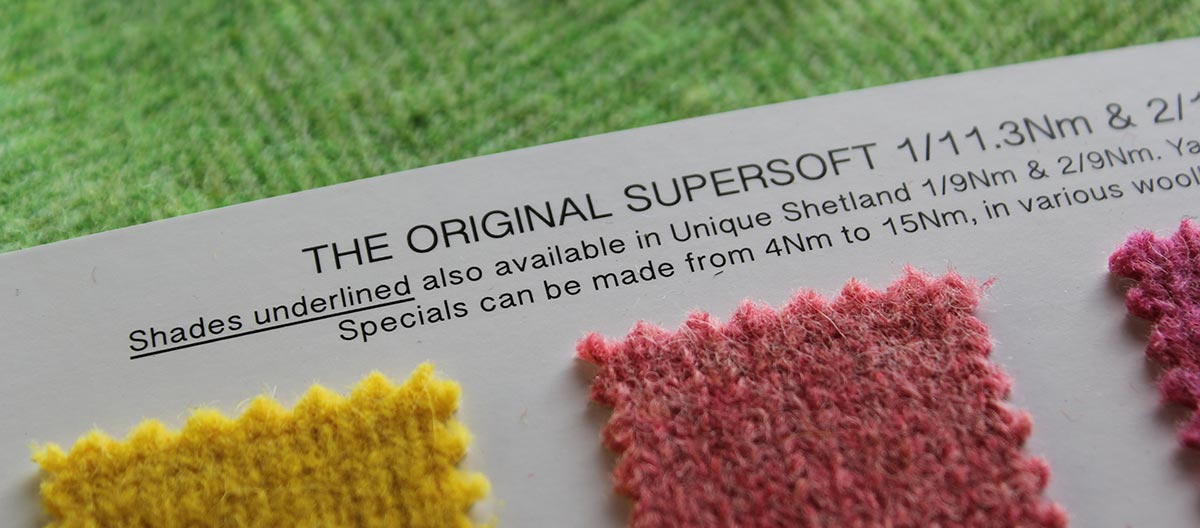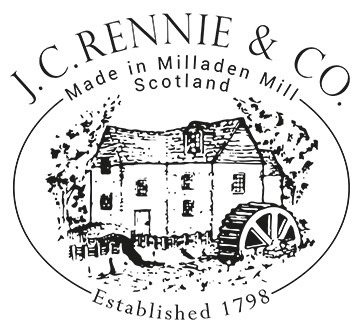GREASY YARN TECHNICAL GUIDE

Please note that the proper technical description of woollen yarn varies significantly to the descriptions simplified for use for domestic hand knitters. As we sell both cone yarns (greasy) and hand knitting yarns (clean), please use this as a guide for our coned yarn:
YARNS ON THE CONE FOR HAND WEAVERS & MACHINE KNITTERS (GREASY)
Generally in the woollen trade we describe the name or brand of the yarn (i.e SUPERSOFT) and the metric description. (i.e. 2/11.3Nm).
What does the metric description 2/11.3Nm mean?
2 = The number of different yarns plied together.
11.3 = The length in meters, per ply, required to weigh one gram.
Therefore, a 2/11.3Nm yarn will require 5.65 meters to make one gram, because it has been plied twice, and therefore requires half the length to make 1 gram.
A 2/4Nm would therefore be thicker than a 2/11.3Nm, but if we plied a 1/11.3Nm 5 times to make a 5/11.3Nm then this would be almost the same:
4Nm divided by 2 = resultant count of 2 meters to make 1 gram
11.3Nm divided by 5 = resultant count of 2.26 meters to make 1 gram
(Note that our metric measurements are based on clean results, that is how many meters, per ply, required to make one gram once the yarn has been scoured).
What will be the total length of the yarn in a 0.85 kg cone?
Using the above formulae it may be possible to get a rough estimation but it is impossible to get an exact figure as there are many variables due to the natural properties of yarn, including moisture gain/loss.
Assuming a cone of yarn weighs 0.85kg (greasy), including the weight of the cone centre without the yarn, one needs to remove no more than 10% to account for the weight of the cone centre, moisture loss and the processing oil which will be removed once scoured. This leaves 0.765kg or 765 grams.
If the yarn is 1/11.3Nm then you would multiply 11.3m x 765 grams = 8644.5 meters. If the yarn is plied twice (i.e. 2/11.3Nm) then the yarn will be twice as thick and therefore will be twice as short = 4,322.25 meters.
For the same quality a 50 gram ball of yarn which is 2/11.3Nm could be measured with the following formulae: (11.3 x 50)/2 = 282.5 meters. Hand knitting balls will already be scoured so one would not have to take into account the weight of the processing oil or the weight of the cone in the above calculation.
How many garments can I make from a 0.85kg cone (greasy)
This depends on what garment you are making and what size. We can normally make three or four sweaters with a 0.85 kg cone. Generally think backwards. If you are knitting 8 pairs of socks and you estimate each sock will weigh 50 grams then a 0.85kg cone (greasy) might make 7 pairs plus 1 sock.
8 (pairs) x 2 (socks) x 50 grams = 0.8 Kgs (or 800 grams)
0.85 Kg minus 10% (to account for cone centre, moisture loss, removal of processing oil and tolerance)
= 0.765kg (or 765 grams).
(In this example you might just be able to make 8 pairs since our cones are often more than 0.9kg).
MACHINE KNITTING GAUGES
Chunky 2/4Nm: 2 1/2 - 3 g.g. FLAT.
Unique 2/9Nm: 5 g.g. FLAT (9-12 g.g. Fully fashioned)
Supersoft 2/11.3Nm: 5 g.g. FLAT (9-12 g.g. Fully fashioned)
Supersoft Cashmere 2/11.3Nm: 5 g.g. FLAT (9-12 g.g. Fully fashioned)
Rennie Cashmere 2/11.3Nm: 5 g.g. FLAT (9-12 g.g. Fully fashioned)

